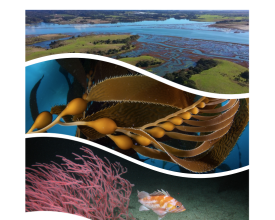California Marine Protected Area Network

California's MPA Network consists of 124 MPAs and 14 special closures and was fully completed in 2012. A partnership between several managing entities (the California Department of Fish and Wildlife, the Ocean Protection Council, and the Fish and Game Commission) led a 10-year review of the network which was completed in 2022 and shared with the public in 2023. The report found that the Network has effectively promoted biodiversity conservation throughout the coast. This outcome has led to the consideration of the Network as a candidate for the IUCN Green List.
Context
Challenges addressed
The California MPA Network was commissioned with the primary goal of delivering biodiversity protection throughout the coastal waters managed by the state. This has been executed primarily by restricting fishing activity in these areas, including full closures at some sites. This has led to socioeconomic challenges for resource-dependent communities and required extensive public engagement, especially with California Native American tribes. Marine heatwaves and other stressors linked to climate change have created considerable challenges for managers of the network and the species that inhabit Californias coastal waters.
Location
Process
Summary of the process
The California Marine Protected Area Network required substantial partnership-building to commission and sustained collaboration to continue monitoring and governing these areas. Management of the Network is split across four key pillars: Outreach and Education, Research and Monitoring, Enforcement and Compliance, and Policy and Permitting. Details on each of these pillar and specific approaches can be reviewed in the Decadal Management Review Report linked in the "resources" section. Regional baseline monitoring, state wide long-term monitoring, network connectivity models, and citizen and community science was all deployed to design and assess the Network's performance across a range of indicators. Adaptive management is woven throughout this process, allowing for continuous evaluation of both the ecological and socioeconomic outcomes of the Network.
Building Blocks
Comprehensive Community Engagement
Ocean users of all types were engaged in the design and implementation of the MPA network. While there were challenges in the early stages, the adaptive management framework that came out of the process is informing how current proposed changes to the Network are being addressed. In particular, engagement with California Native American tribes has been strengthened and is informing statewide progress towards meaningful co-management of coastal and marine areas. The commercial and recreational fishing communities continue to be key partners for the state in the ongoing management of the MPA Network. Understanding how these different groups are engaging with the MPA Network and surrounding waters (or "human dimensions") will be a key aspect of the next phase of MPA monitoring and assessment in California.
Four Pillar Approach
The four pillars of the California MPA Network - 1); Research and Monitoring 2); Outreach and Education; 3) Policy and Permitting; 4) Enforcement and Compliance - create the basis for ongoing, adaptive management. As both a foundation for the design of the network and the assessment of its performance, the four pillars ensure that ecological and social goals are being pursued simultaneously.
Baseline monitoring and research on ecological connectivity were essential in the design of the Network. Recent assessment has shown that ecological connectivity between sites within the network are strengthening the reproductive capacity of key fish species, validating the science-based approach to the design of the Network. Ocean users continue to be engaged through regional meetings where different community members have the opportunity to weigh in on proposed changes and raise specific concerns around management actions. Permits are granted to different groups to assess specific aspects of the MPA Network performance and fill in key knowledge gaps. Information from enforcement activities helps contextualize the human dimensions of the MPA network and reveal opportunities for targeted outreach to promote compliance with regulations.
Adaptive Management Focus
Adaptive management is the foundation of the MPA Network. Evaluation of ecological and socioeconomic outcomes is an ongoing, iterative process that is informing the allocation of resources across different management activities in real time. Centering adaptive management allows for regular community contribution and responsiveness to the needs of different types of ocean users. It also allows for greater responsiveness to threats like climate change, which pose a significant threat to the ecological benefits provided by the Network.
Impacts
The California MPA Network has been shown to produce bigger and more fish, particularly in areas with significant fishing pressure outside of particular MPAs. As a spatial management tool, the Network is not equipped to address all threats to oceanic biodiversity. In particular, long-term trends and extremes resulting from climate change have impacted MPAs and surrounding areas in similar ways. However, the biodiversity protections and increased abundance of marine organisms within protected areas is expected to confer general resilience by reducing human-induced pressure through activities such as fishing.
Beneficiaries
All Californians benefit from the MPA Network as a public trust resource. The Network is increasingly being leveraged to advance community science and Tribal sovereignty in California.
